Search
Search Results
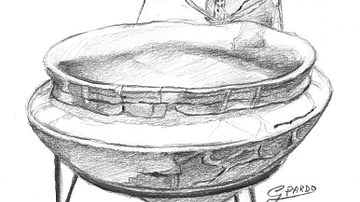
Image
Ritual Ceramic Wash Basin (Thapsos Culture, Sicily)
Large wash basin on a high foot with bifid handle (c. 1500-c. 1200 BCE), richly decorated with geometric engravings. Thapsos Culture, Sicily. (Pencil drawing by Gina Pardo).
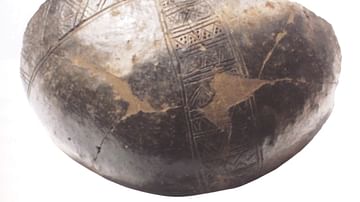
Image
Polada Culture Pot
Clay pot, Polada Culture, Abitato del Lavagnone, Bronze Age, 1800-1600 BCE.
Giovanni Rambotti Civic Archaeological Museum, Desenzano del Garda, Italy.
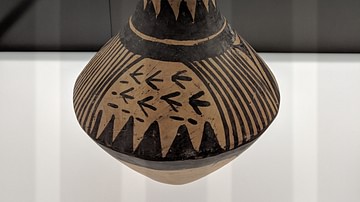
Image
Jar With Stylized Landscape, Majiayao Culture
A pottery jar with stylized landscape from Gansu or Qinhai Province, China. Produced by the Majiayao Culture, late 4th / early 3rd millennium BCE.
Exhibited at Museum Rietberg, Zurich, Switzerland.
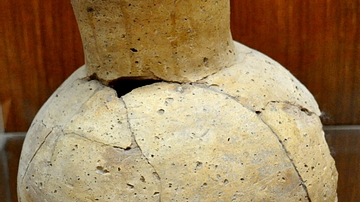
Image
A Jar from Hassuna Culture
This ball-body jar was found in the Faida district of the modern city of Musil, Ninawa Governorate, Iraq. It dates back to the Hassuna period, 6th millennium BCE. (The Sulaimaniya Museum, Iraq).
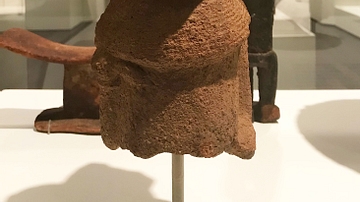
Image
Nok Culture Fragment of a Figure
As a result of erosion and mining, one of the oldest and most sophistcated art-producing cultures known in sub-Saharan Africa came to light in the mid-20th century. Hundreds of hollow figures, heads, and fragments made of coarse clay have...
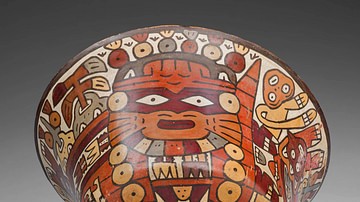
Image
Nazca Culture Bowl
Bowl, 180 BCE / 500 CE. Nazca; south coast, Peru. The Art Institute of Chicago, Kate S. Buckingham Endowment.
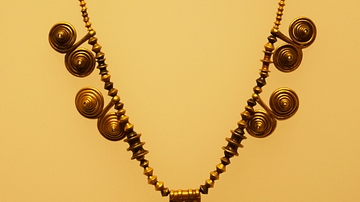
Image
Trialeti Culture Necklace
This golden necklace was made by people who belonged to the ancient Trialeti culture. They flourished during the late-3rd and early-2nd millennium BCE. Many exquisite items crafted in gold and silver by the Trialeti culture have been found...
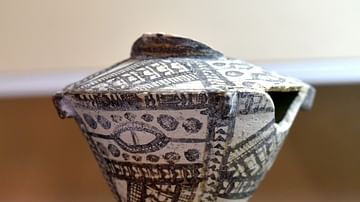
Image
Pottery Vessel from Ninevite V Culture
This peculiar pottery vessel was found at Nineveh, Iraq. The surface is painted with different geometric shapes. Ninevite V period/culture of Upper Mesopotamia, c. 2900-2600 BCE. On display at the Iraq Museum in Baghdad.
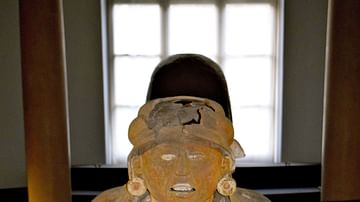
Image
Veracruz Culture Statue of Cihuacoatl
Although Cihuacoatl was later known in Aztec mythology as the "snake woman," she was also a fertility goddess and a goddess of motherhood. This statue comes from the Veracruz culture, which lived along the Gulf Coast in what is present-day...
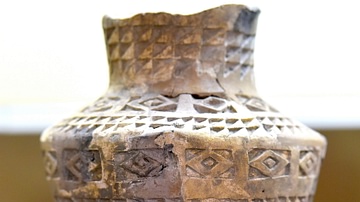
Image
Vessel from Ninevite V Culture
This pottery vessel was found at Nineveh, Iraq. The surface is decorated with different geometric motifs and shapes. Ninevite V period/culture of Upper Mesopotamia, c. 2900-2600 BCE. On display at the Iraq Museum in Baghdad.